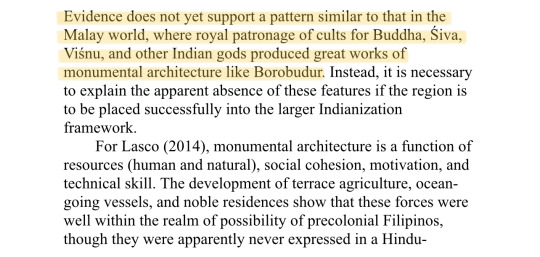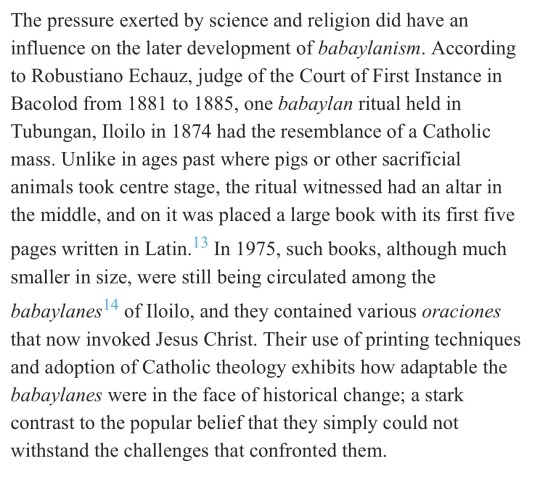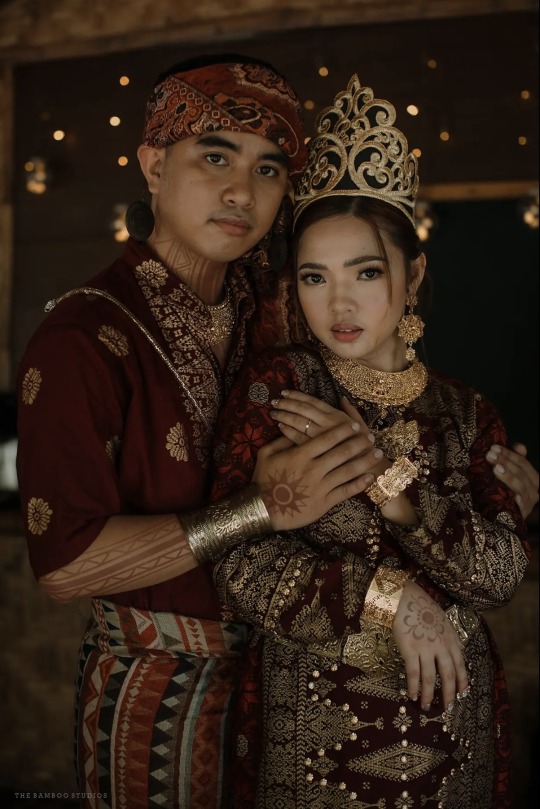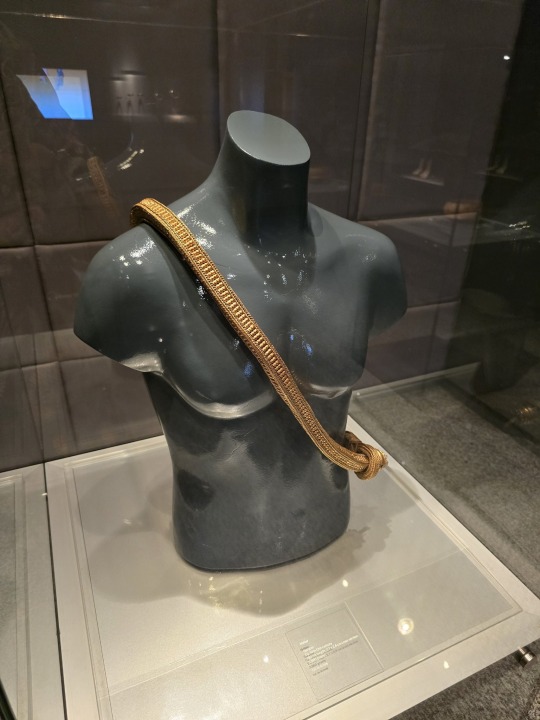Text

Brenda Fajardo (B. 1940, Manila, the Philippines) - Mga Babae sa Panahon ng Espanyol (Women during the Spanish colonial period) from 'Cards of life - Women's series,' 1993.
22 notes
·
View notes
Text

Brenda Fajardo (B. 1940, Manila, the Philippines) - Pakikibaka Araw-araw (Daily struggle), from 'Cards of life - Women's series' 1993.
12 notes
·
View notes
Text
MANILA — A month after his abduction, surfaced environment defender Francisco “Eco” Dangla III detailed his harrowing experience at the Commission on Human Rights, on April 26.
Dangla and fellow activist Axielle “Jak” Tiong were mauled into a van by armed men on March 24 in barangay Polo, San Carlos, Pangasinan. Later on, the two activists would be found on March 28, after more than 600 individuals and international and local organizations campaigned for their immediate release.
Their abductors are still at large, prompting the activists to seek sanctuary.
Dangla believes that their abductors are state agents, due to the build up of harassment incidents prior to the abduction.
In fact, Dangla had been tagged as a “terrorist” and “threat” by State forces. This is according to the 2019 presentation of the Regional Peace and Order Council of Region 1.
“Since 2014, I have been a victim of several forms of harassment, intimidation, vilification, and threat in different chapters of my service to the people and the environment,” he said in Filipino.
The harrowing ordeal
Dangla said that on the day of the abduction, the unidentified men pointed their guns at them, pushing them to submission.
“When we arrived at a place, which looked like a safe house, they said that our lives were at their hands. We cannot do anything. They threatened to kill us,” Eco recalled.

He also added that the abductors threatened to burn and bulldoze them. “They released a cobra. We also heard a sound similar to the bulldozer. They said that they would burn us, that they would put us under the wheels of the bulldozer. Later on, I would smell burning plastic and wheels,” Eco said in Filipino.
There were moments when both Dangla and Tiong felt hopeless in the three days of distress. Dangla said, “I told myself, maybe it’s time. Maybe they would kill us now. But until the end, I still tried to explain our environmental initiatives, until they got angry at us.”
“They tried to give us an ultimatum. They do not want to hear our explanation about the environment. Instead, they asked us about people, about names we do not know, because they wanted to connect us to CPP-NPA,” he said.
It also came to the point that the abductors also threatened their families. “We experienced an unimaginable intimidation and threat to my life through physical and psychological torture. Worse, they threatened the lives of our loved ones, and my family,” he said.
Dangla said that prior to their abduction, he and Tiong suffered from multiple cases of red-tagging and harassment, stemming from their advocacy work. They are both convenors of the Pangasinan People’s Strike for Environment (PPSE), a local grassroots network of environmental advocates.
Overwhelming support and solidarity
The environment activists were released before the sunrise of March 28. They were blindfolded prior to their release so they were not able to identify the trail of place. Dangla even thought that the abductors would dispose of them during that time.
“When we were surfaced, I saw the overwhelming support of environment groups, churches, and individuals. From there, I felt that despite the strength of our enemy, if we fight in unison, we can achieve victories,” Dangla said.
He expressed his deepest gratitude to all the organizations and individuals who campaigned for their release. Barangay Polo residents also provided support to their parents.
“Without the quick response and campaign of various groups and sectors, including the church in the national and international scope, maybe our abductors would not release us,” he said.
Speaking at the same press conference, Jonila Castro, another surfaced environmental activist who has been fighting against the reclamation projects in Manila Bay, expressed support.to Dangla.
Castro and her fellow activist Jhed Tamano, were abducted on September 4, 2023. Weeks later, they were presented as fake surrenderees by the NTF-ELCAC, only for the two activists to expose the violence they suffered.
She also highlighted that instead of committing or being oblivious to the rampant human rights violations, the government should address the problems caused by climate change such as El Niño.
Castro is now the advocacy officer for water and reclamation of the Kalikasan People’s Network for Environment (PNE). She echoed Dangla’s sentiments that the abductions are used to silence environmental defenders and activists opposing destructive projects.
“These abductions are part of a larger pattern of natural resource plunder by foreign corporations, often with government and military support. Activists opposing these projects and defending local community rights are viewed as obstacles to profit-making and are therefore the target for intimidation, harassment, and violence,” she said.
Continuing the fight against destructive environmental projects
As convenors of the PPSE, Dangla said that they are at the forefront of opposing destructive mining projects.
Among these projects is the 10,000 hectares of black sand off-shore mining in the Lingayen Gulf. This will cover the towns of Sual, Labrador, Lingayen, Binmaley, and Dagupan, which seek to extract 25 million of magnetite sand yearly for 25 years.
According the government data from the Bureau of Fisheries and Aquatic Resources (BFAR), around 28,000 fisherfolk are dependent on the gulf for their livelihood. The project could also affect the biodiversity and ecosystems in the area, according to a BFAR aquaculturist.
In addition to this, Executive Order 130 (EO 130) by former President Rodrigo Duterte, which sought to lift the moratorium on mineral agreements, prompt the surge of applications.
“Around 84,000 hectares of lands are at stake due to the Executive Order,” Dangla said.
They are also opposing the plan of the local government to build six nuclear power plants. In 2023, PPSE reported that the LGU is encouraging community members to sign a statement of community acceptance for the projects.
Despite the harrowing violence that they experienced, Dangla vows to continue the fight. “My plan is to continue and maybe we will still plan how we move seamlessly, but my will is firm to continue the fight.”
According to the human rights group Karapatan Central Luzon, the number of surfaced activists is five (5), but there 14 defenders still missing. Three of them are from Central Luzon: Steve Abua, Diodicto Minzo, and Joey Torres.
full article: https://www.bulatlat.com/2024/04/26/despite-suffering-torture-environmental-defenders-continue-fight-against-destructive-projects/
6 notes
·
View notes
Text


Why the Philippines does not have Hindu-Buddhist temples like other places in Southeast Asia such as Borobudur and Angkor Wat, according to “The Problem of the Visayas in Southeast Asian History and Historiography” by David Gowey
21 notes
·
View notes
Text




Towards the end of the 19th century, there were only 18 licensed physicians in the Visayas, 2 in Mindanao, and 42 in Luzon.
The babaylanes remained integral to Visayan society for their needed healing activities, a fact that even priests acknowledged since most of them only had little training in the natural sciences (and were unfamiliar with local flora).
Their use of printing techniques and adoption of Catholic theology exhibits how adaptable the babaylanes were in the face of historical change; a stark contrast to the popular belief that they simply could not withstand the challenges that confronted them.
It was only up in the mountains where they could conduct their rituals, prayers, and collect herbs in peace, away from the busy developments of nascent urban communities.
Their prestige as healers offered the babaylanes relative ease to move in and out of society, and this would later be instrumental in the two babaylan-led uprisings in Negros.
Excerpt from “The Babaylan Survived Colonialism” (2021) by Pippo Carmona
8 notes
·
View notes
Text
me ����♀️🙋🙋♂️
who wants a list of folk catholic ritual incantations used by tindal dusuns
10 notes
·
View notes
Text

Fundraising effort for Palestinian and Fil-Palestinian families who arrived in the Philippines. See Twitter link below for thread updates:
https://twitter.com/lizzyfaith/status/1772506113591607612
588 notes
·
View notes
Text
when you get so nostalgic for the past that you start romanticizing people you never even had a connection with
1 note
·
View note
Text
filipinos have a tendency to call non-hispanicized ethnic groups tribes, be it their own precolonial ancestors or contemporary groups. 1500s visayans are tribal in the same way 2020s tausug and mansaka people are tribal. only those from christianized/hispanicized ethnic groups (tagalogs, cebuanos, ilocanos, kapampangans, etc) do away with the word tribe.
4 notes
·
View notes
Text
two decades alive on this earth and i still can’t tell my veteran tisoy actors apart. examples: jaime fabregas, ron valdez, eddie garcia, papa ni andi eigenmann.
1 note
·
View note
Text



Precolonial Visayan-inspired prenup photoshoot, September 2022. Photographs by The Bamboo Studios, makeup by Harvy Christian Baliguat, hair by Brena May, costume from Sharrie Villaver, and accessories and assistance by Minxie Villaver. Location of shooting is Payag Coffee House in Busay, Cebu.
4 notes
·
View notes
Text

©Cats Against the Return of Marcoses and Martial Law
51 notes
·
View notes
Text



Nahia Lloren dressed in classical Visayan women’s wear for Where the Leaves Fall Magazine, April 2024 issue.
5 notes
·
View notes
Text


Gold sash discovered in Surigao, dated to c. 10th—13th century. Photographs shared by Louie Buana.
5 notes
·
View notes
Text


A recreation of a Tagalog noblewoman’s attire as featured on Boxer Codex made of silk and songket fabric. Posted by Nahia Lloren on the Facebook group Philippine Heritage Costume and Dress. (July 7, 2021)
62 notes
·
View notes
Text
related: why are engkantos always white and have tall noses and are beautiful?
i wonder: why is so much of our ghost stories rooted in colonialism? “this school used to be a wartime graveyard/hospital/dumping ground/headquarters during the japanese/spanish/dutch/british/american period.”
3 notes
·
View notes
